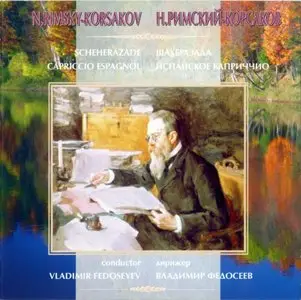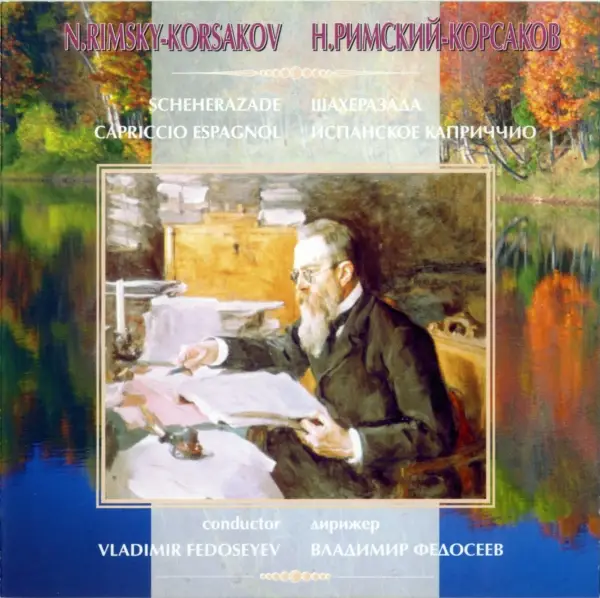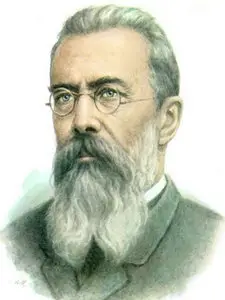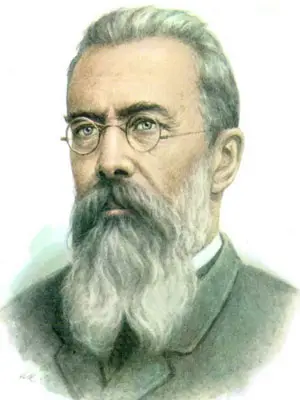N.Rimsky-Korsakov - Scheherazade, Capriccio Espagnol, Vladimir Fedoseyev
CD | APE/MP3-320kbps | 293.1/174.9Mb | 56:52 | "GRAMZAPIS"
CD | APE/MP3-320kbps | 293.1/174.9Mb | 56:52 | "GRAMZAPIS"
Contents:
SCHEHERAZADE, symphonic suite, Op. 35,
CAPRICCIO ESPAGNOL, Op. 34
BORIS KORSAKOV - violin (1)
The USSR TV And Radio Large Symphony Orchestra
conductor - VLADIMIR FEDOSEYEV
recorded in 1981 (1), 1989(2)
In 1888 N. Rimsky-Korsakov created his largest and best symphonic work — "Scheherazade" suite. By the end of July the score of the suite was finished, and on October 22 the author conducted the premiere performance of "Scheherazade". The work was dedicated to V. Stasov. In the score of "Scheherazade" Rimsky-Korsakov outlined the following programme: "Sultan Shakhnar convinced in deceit and unfaithfulness of women pledged to execute each of his wives after the first night, but Scheherazade managed to save her life by entertaining sultan with tales which she narrated for 1001 nights. Thus, burning with curiosity Shakhriar constantly delayed her execution day and at last he forgot completely about his intention. Many a wonders were narrated by Scheherazade who recited verses by poets and song lyrics, plaited tale into a tale". In the first edition of "Scheherazade" the-titles of the movements make it evident what particular episodes of "Arabian nights" inspired the composer. In the first movement — it is the sea, sometimes calm, sometimes stormy and Sindbad the Sailor and his ship. The second movement — Prince Calender and his story about all the wonders seen by him while on journey. The third movement — lyrical scene "Prince and Princess". In the fourth movement there are two independent scenes: festivity in Bagdad and a ship broken-against a rock with a copper rider. Capriccio espagnol was composed in 1887. The basis of the work was formed by the sketches of the intended virtuosic violin fantasia on Spanish themes. N. Rimsky-Korsakov wrote about Capriccio espagnol: "Spanish themes, mainly dancing in style, provided me with a rich material for applying various orchestral effects". Five movements are performed without interval.From the disk cover
Diwnload links:
in the APE format (lossless)
http://rapidshare.com/files/15..._CAPRICCIO_FEDOSEYEV.part1.rar
http://rapidshare.com/files/15..._CAPRICCIO_FEDOSEYEV.part2.rar
http://rapidshare.com/files/15..._CAPRICCIO_FEDOSEYEV.part3.rar
in the MP3-320kbps format (lossy)
http://rapidshare.com/files/15...RICCIO_FEDOSEYEV_MP3.part1.rar
http://rapidshare.com/files/15...RICCIO_FEDOSEYEV_MP3.part2.rar
in the APE format (lossless)
http://rapidshare.com/files/15..._CAPRICCIO_FEDOSEYEV.part1.rar
http://rapidshare.com/files/15..._CAPRICCIO_FEDOSEYEV.part2.rar
http://rapidshare.com/files/15..._CAPRICCIO_FEDOSEYEV.part3.rar
in the MP3-320kbps format (lossy)
http://rapidshare.com/files/15...RICCIO_FEDOSEYEV_MP3.part1.rar
http://rapidshare.com/files/15...RICCIO_FEDOSEYEV_MP3.part2.rar





